30 Delicious Gluten-Free Food Ideas That Will Transform Your Diet Today
Are you struggling to find tasty gluten-free options that actually taste good?
I understand how challenging it can be to navigate the world of gluten-free eating while maintaining flavor and nutrition.
The good news is that there are countless delicious gluten-free foods that can make your meals exciting and satisfying.
Whether you’re dealing with celiac disease, gluten sensitivity, or simply choosing to eliminate gluten, these options will revolutionize your meal planning.
Let’s explore these nutritious and delectable gluten-free foods that will make you forget you’re eating gluten-free at all.
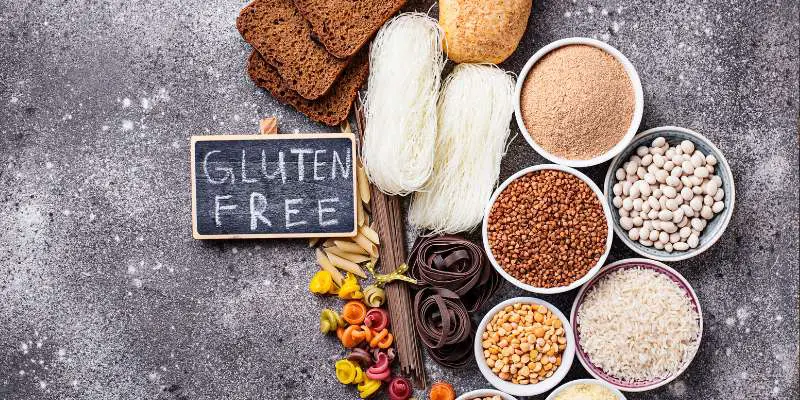
Proteins
Chicken Breast
Lean and versatile, chicken breast is a staple in gluten-free cooking.
You can grill, bake, or pan-sear it for countless meal options.
This protein powerhouse pairs perfectly with any gluten-free side dish and takes on whatever seasoning you choose to use.
For meal prep enthusiasts, chicken breast holds up well when cooked in advance, making it ideal for busy weekday lunches and dinners.
When selecting chicken breast, opt for organic or free-range options for the best flavor and nutritional value.
Nutrition Info: Per 100g – Calories: 165, Protein: 31g, Fat: 3.6g, Carbs: 0g, Iron: 1mg, Potassium: 256mg
Beef Steak

A perfectly cooked beef steak delivers both flavor and essential nutrients.
Choose cuts like sirloin or tenderloin for lean protein options.
Beef steak requires minimal seasoning to shine – just salt, pepper, and your favorite herbs can create a memorable meal.
The key to perfect steak lies in proper cooking temperature and resting time, allowing the juices to redistribute throughout the meat.
For optimal nutrition, select grass-fed beef when possible, as it contains higher levels of beneficial omega-3 fatty acids.
Nutrition Info: Per 100g (sirloin) – Calories: 244, Protein: 27g, Fat: 15g, Carbs: 0g, Iron: 2.4mg, Zinc: 4.8mg
Lamb Chops

Lamb chops offer a rich, distinctive flavor that elevates any gluten-free meal.
They’re perfect for special occasions or when you want to add variety to your protein choices.
Marinating lamb chops with herbs like rosemary and thyme enhances their natural flavor profile.
Quick-cooking makes lamb chops ideal for weeknight dinners when you want something impressive but don’t have hours to spend in the kitchen.
Choose grass-fed lamb for the most nutritional benefits and best flavor.
Nutrition Info: Per 100g – Calories: 294, Protein: 25g, Fat: 21g, Carbs: 0g, Iron: 1.9mg, Zinc: 4.4mg
Turkey
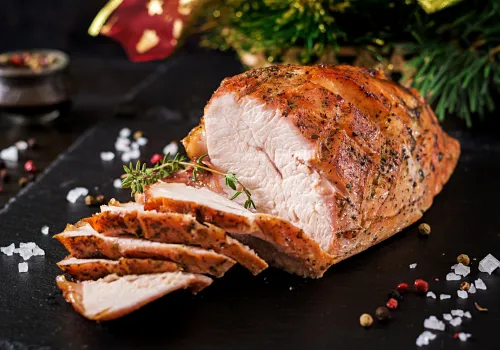
Turkey isn’t just for holidays – it’s a lean, versatile protein perfect for everyday meals. Ground turkey can replace ground beef in countless recipes.
Turkey breast slices make excellent sandwich fillings when paired with gluten-free bread.
This lean meat is particularly good for those watching their fat intake while maintaining high protein consumption.
Consider buying organic turkey for the best taste and nutritional profile.
Nutrition Info: Per 100g (breast) – Calories: 157, Protein: 29g, Fat: 3.6g, Carbs: 0g, Selenium: 31mcg, Phosphorus: 213mg
Fish
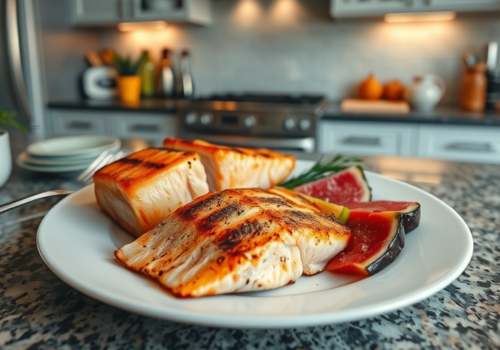
Fresh fish like salmon, tuna, and cod are naturally gluten-free and packed with essential nutrients.
Each variety offers unique flavors and cooking possibilities.
Salmon provides heart-healthy omega-3 fatty acids, while tuna offers lean protein perfect for quick meals.
Cod’s mild flavor makes it an excellent choice for those new to cooking fish or serving picky eaters.
Choose wild-caught fish when possible for optimal nutrition and environmental sustainability.
Nutrition Info: Per 100g (salmon) – Calories: 208, Protein: 22g, Fat: 13g, Carbs: 0g, Omega-3: 2.3g, Vitamin D: 526IU
Eggs

Eggs are a breakfast staple and versatile ingredient in gluten-free cooking.
They can be prepared in countless ways and work well in both sweet and savory dishes.
Beyond basic scrambled or fried preparations, eggs can become the base for creative gluten-free meals like frittatas and quiches.
They’re an excellent source of complete protein and essential nutrients, making them perfect for any meal of the day.
Choose organic, free-range eggs for the best nutrition and flavor profile.
Nutrition Info: Per large egg – Calories: 72, Protein: 6g, Fat: 5g, Carbs: 0.4g, Vitamin D: 41IU, Choline: 147mg
Grains & Seeds:
Quinoa

Quinoa is a complete protein source and ancient grain that’s naturally gluten-free. Its slightly nutty flavor adds interest to many dishes.
This versatile grain can be used as a base for bowls, added to salads, or served as a side dish.
Quinoa cooks quickly and absorbs flavors well, making it perfect for meal prep and busy weeknight dinners.
Always rinse quinoa thoroughly before cooking to remove any bitter coating.
Nutrition Info: Per 100g (cooked) – Calories: 120, Protein: 4.4g, Fat: 1.9g, Carbs: 21.3g, Fiber: 2.8g, Iron: 1.5mg
Rice

Rice is a gluten-free staple that comes in many varieties, each with its own texture and nutritional profile.
Brown rice offers more fiber, while white rice is quick-cooking.
It serves as an excellent base for stir-fries, curries, and grain bowls.
Rice can be batch-cooked and frozen for convenient meal prep options.
Choose whole grain varieties like brown or black rice for maximum nutritional benefits.
Nutrition Info: Per 100g (brown rice, cooked) – Calories: 111, Protein: 2.6g, Fat: 0.9g, Carbs: 23g, Fiber: 1.8g, Magnesium: 43mg
Buckwheat
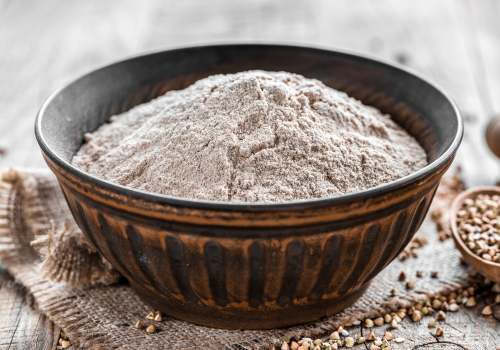
Despite its name, buckwheat is completely gluten-free and not related to wheat at all. It has a rich, earthy flavor that works well in many dishes.
Buckwheat can be used to make pancakes, noodles (soba), or served as a hot cereal.
This pseudo-grain is particularly popular in Eastern European and Asian cuisines.
Look for certified gluten-free buckwheat to avoid cross-contamination during processing.
Nutrition Info: Per 100g (cooked) – Calories: 92, Protein: 3.4g, Fat: 0.6g, Carbs: 20g, Fiber: 2.7g, Magnesium: 86mg
Chia Seeds
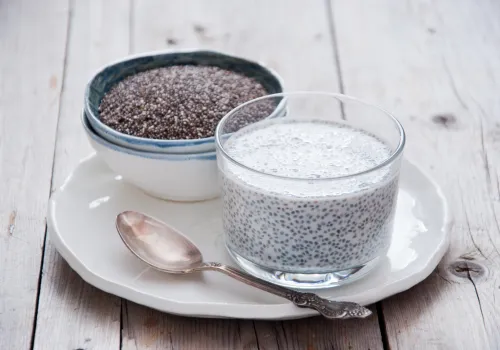
Chia seeds are tiny nutritional powerhouses that work wonderfully in gluten-free cooking.
They can be used as egg replacers in baking or to make puddings.
These seeds absorb liquid and create a gel-like consistency, perfect for breakfast parfaits and smoothie bowls.
Chia seeds require no cooking and can be sprinkled on virtually any dish for added nutrition.
Store chia seeds in an airtight container in a cool, dry place to maintain freshness.
Nutrition Info: Per 100g – Calories: 486, Protein: 17g, Fat: 31g, Carbs: 42g, Fiber: 34g, Omega-3: 17.8g
Flaxseeds

Flaxseeds bring both nutrition and functionality to gluten-free cooking. When ground, they can act as a binding agent in baking.
Their nutty flavor enhances smoothies, yogurt bowls, and baked goods without overpowering other ingredients.
For best absorption of nutrients, flaxseeds should be ground just before use.
Store whole flaxseeds in the refrigerator to preserve their healthy oils.
Nutrition Info: Per 100g – Calories: 534, Protein: 18g, Fat: 42g, Carbs: 29g, Fiber: 27g, Omega-3: 22.8g
Amaranth
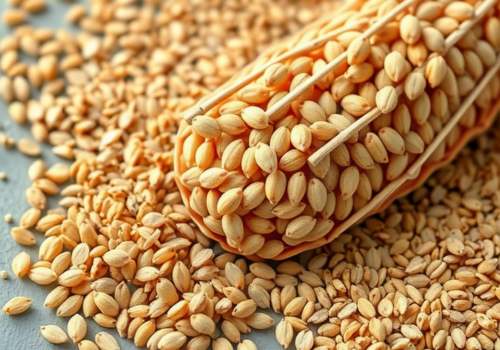
Amaranth is an ancient grain with a slightly peppery flavor. It’s perfect for those seeking unique alternatives to common grains.
This tiny grain can be popped like popcorn, cooked into porridge, or used in baking.
Amaranth maintains its texture well when cooked, making it excellent for meal prep.
Choose organic amaranth for the purest flavor and best nutritional profile.
Nutrition Info: Per 100g (cooked) – Calories: 102, Protein: 3.8g, Fat: 1.6g, Carbs: 18.7g, Iron: 2.1mg, Calcium: 47mg
Fruits:
Apples
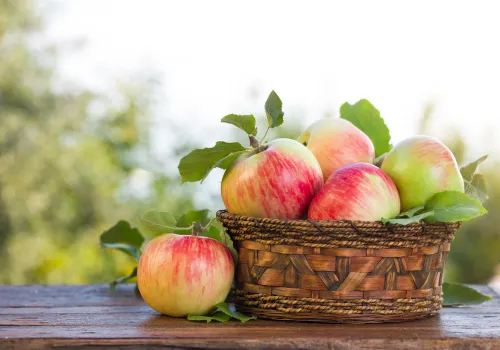
Fresh apples offer natural sweetness and versatility in gluten-free eating.
They’re perfect for snacking, baking, or adding to salads.
Different varieties provide varying levels of sweetness and texture, allowing for diverse culinary applications.
Apples pair wonderfully with gluten-free granola or nut butter for a satisfying snack.
Choose organic apples when possible, and always wash thoroughly before eating.
Nutrition Info: Per medium apple – Calories: 95, Protein: 0.5g, Fat: 0.3g, Carbs: 25g, Fiber: 4g, Vitamin C: 8.4mg
Bananas

Bananas are nature’s perfect portable snack and a versatile ingredient in gluten-free baking.
They can replace eggs or add moisture to baked goods.
Their natural sweetness makes them ideal for smoothies and breakfast dishes.
Ripe bananas can be frozen for later use in baking or smoothies.
Select bananas at various ripeness levels for different culinary uses.
Nutrition Info: Per medium banana – Calories: 105, Protein: 1.3g, Fat: 0.4g, Carbs: 27g, Fiber: 3.1g, Potassium: 422mg
Oranges

Fresh oranges bring vitamin C and bright flavor to your gluten-free diet. They’re perfect for snacking or adding to recipes.
The zest can be used to add natural citrus flavor to gluten-free baked goods.
Oranges segment beautifully for salads and desserts.
Look for heavy, firm oranges for the best juice content and flavor.
Nutrition Info: Per medium orange – Calories: 62, Protein: 1.2g, Fat: 0.2g, Carbs: 15g, Fiber: 3g, Vitamin C: 70mg
Berries

Fresh berries (strawberries, blueberries, raspberries) add natural sweetness and antioxidants to your gluten-free diet.
They’re perfect in smoothies, on salads, or as simple snacks.
Each variety offers unique flavors and nutritional benefits.
Berries freeze well for year-round enjoyment.
Choose organic berries when possible to avoid pesticide exposure.
Nutrition Info: Per 100g (mixed berries) – Calories: 57, Protein: 0.7g, Fat: 0.3g, Carbs: 14g, Fiber: 2.4g, Vitamin C: 30mg
Grapes

Fresh grapes make perfect snacks and add natural sweetness to various dishes.
They’re excellent in fruit salads or frozen for a cool treat.
Both red and green varieties offer different flavor profiles and nutritional benefits.
Grapes can be roasted for a unique flavor experience in savory dishes.
Select firm, plump grapes attached to their stems for the best quality.
Nutrition Info: Per 100g – Calories: 69, Protein: 0.7g, Fat: 0.2g, Carbs: 18g, Fiber: 0.9g, Vitamin K: 14.6mcg
Mango

Fresh mango brings tropical sweetness and versatility to gluten-free cooking.
It’s perfect in smoothies, salsas, or eaten fresh.
The fruit can be diced for salads or pureed for sauces and desserts.
Mangoes can be frozen when ripe for later use in smoothies.
Choose mangoes that yield slightly to pressure for perfect ripeness.
Nutrition Info: Per 100g – Calories: 60, Protein: 0.8g, Fat: 0.4g, Carbs: 15g, Fiber: 1.6g, Vitamin A: 1262IU
Vegetables:
Sweet Potatoes

Sweet potatoes are naturally gluten-free and incredibly versatile. They can be baked, mashed, or made into fries.
Their natural sweetness intensifies when roasted, making them a satisfying side dish.
Sweet potatoes store well and can be meal-prepped in various ways.
Look for firm, smooth sweet potatoes without soft spots.
Nutrition Info: Per 100g (baked) – Calories: 90, Protein: 2g, Fat: 0.2g, Carbs: 21g, Fiber: 3.3g, Vitamin A: 19218IU
Spinach

Fresh spinach is a nutrient-dense leafy green that’s naturally gluten-free. It’s perfect raw in salads or cooked in numerous dishes.
This versatile green can be added to smoothies for extra nutrition without changing the taste significantly.
Spinach cooks down significantly, so buy more than you think you need for cooked dishes.
Choose organic spinach when possible for the best quality and nutrition.
Nutrition Info: Per 100g (raw) – Calories: 23, Protein: 2.9g, Fat: 0.4g, Carbs: 3.6g, Fiber: 2.2g, Iron: 2.7mg
Broccoli

Fresh broccoli is a cruciferous vegetable that adds nutrition and texture to gluten-free meals. It can be roasted, steamed, or enjoyed raw.
The entire vegetable is edible, from florets to stems, making it economical and versatile.
Broccoli holds up well when meal prepping and can be frozen for later use.
Look for bright green heads with tight, compact florets for the freshest quality.
Nutrition Info: Per 100g – Calories: 34, Protein: 2.8g, Fat: 0.4g, Carbs: 7g, Fiber: 2.6g, Vitamin C: 89.2mg
Carrots
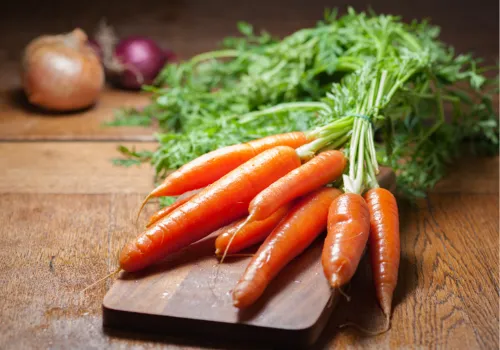
Fresh carrots bring natural sweetness and crunch to your gluten-free diet.
They’re perfect raw, roasted, or added to soups and stews.
Their versatility extends to baking, where they can add moisture to gluten-free cakes and muffins.
Carrots store well in the refrigerator, making them perfect for meal planning.
Choose firm, bright orange carrots without cracks for best results.
Nutrition Info: Per 100g – Calories: 41, Protein: 0.9g, Fat: 0.2g, Carbs: 10g, Fiber: 2.8g, Vitamin A: 16706IU
Bell Peppers
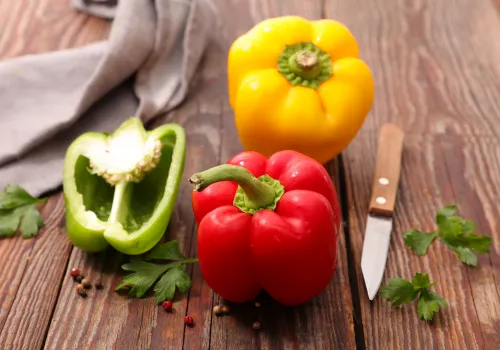
Colorful bell peppers add vibrancy and nutrition to gluten-free cooking. Each color offers different nutritional benefits and subtle flavor variations.
They can be eaten raw, roasted, stuffed, or added to countless dishes.
Bell peppers are excellent for meal prep and can be frozen for later use.
Select firm peppers with glossy skin for the best quality.
Nutrition Info: Per 100g – Calories: 31, Protein: 1g, Fat: 0.3g, Carbs: 6g, Fiber: 2.1g, Vitamin C: 127.7mg
Zucchini
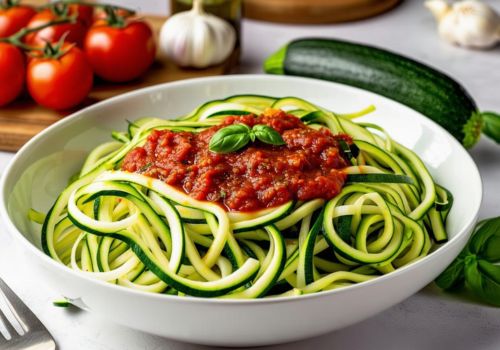
Fresh zucchini is incredibly versatile in gluten-free cooking. It can be spiralized into “noodles,” grilled, or baked into bread.
This low-calorie vegetable adds moisture to baked goods and bulk to meals without heavy calories.
Zucchini can be used raw or cooked in numerous ways.
Choose small to medium-sized zucchini for the best flavor and fewer seeds.
Nutrition Info: Per 100g – Calories: 17, Protein: 1.2g, Fat: 0.3g, Carbs: 3.1g, Fiber: 1g, Vitamin C: 17.9mg
Legumes & Nuts:
Lentils
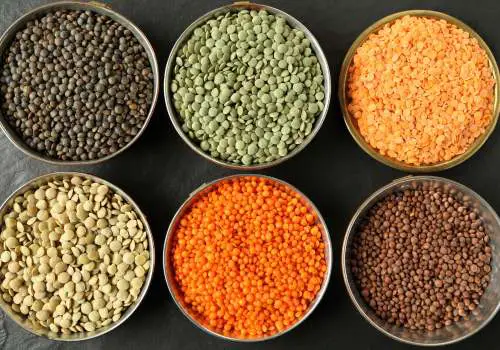
Lentils are protein-rich legumes that work perfectly in gluten-free cooking. They come in various colors, each with slightly different cooking times and uses.
These versatile legumes can be used in soups, salads, or as a meat alternative.
Lentils are budget-friendly and store well in your pantry.
Look for unbroken lentils without any signs of moisture or debris.
Nutrition Info: Per 100g (cooked) – Calories: 116, Protein: 9g, Fat: 0.4g, Carbs: 20g, Fiber: 7.9g, Iron: 3.3mg
Chickpeas
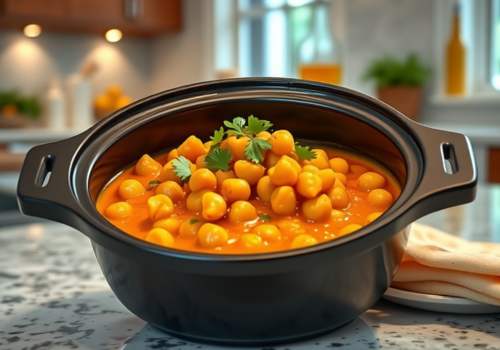
Chickpeas are versatile legumes that can be used in countless gluten-free dishes. They can be roasted for snacks or pureed into hummus.
Their mild flavor makes them perfect for both savory and sweet applications.
Chickpeas are excellent for meal prep and can be bought dried or canned.
Choose low-sodium canned chickpeas or dried ones for the most versatility.
Nutrition Info: Per 100g (cooked) – Calories: 164, Protein: 8.9g, Fat: 2.6g, Carbs: 27g, Fiber: 7.6g, Iron: 2.9mg
Almonds
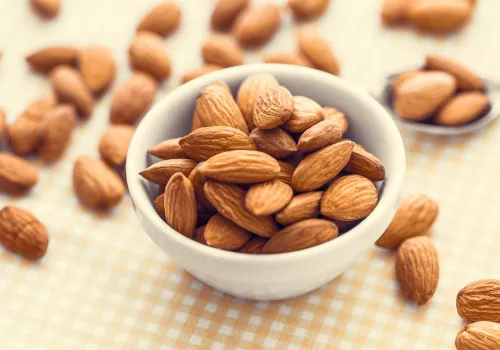
Raw almonds are perfect for gluten-free snacking and can be processed into flour for baking. They’re versatile in both sweet and savory applications.
Almonds can be transformed into milk, butter, or flour for various gluten-free recipes.
These nuts store well in the refrigerator or freezer for extended freshness.
Select raw, unsalted almonds for maximum versatility in recipes.
Nutrition Info: Per 100g – Calories: 579, Protein: 21.2g, Fat: 49.9g, Carbs: 21.7g, Fiber: 12.5g, Vitamin E: 25.6mg
Cashews

Cashews bring creamy texture and mild flavor to gluten-free dishes. They’re perfect for snacking or creating dairy-free sauces.
When soaked and blended, cashews can create creamy sauces and dressings.
Their mild flavor makes them perfect for both sweet and savory applications.
Store raw cashews in an airtight container in the refrigerator for best results.
Nutrition Info: Per 100g – Calories: 553, Protein: 18.2g, Fat: 43.8g, Carbs: 30.2g, Fiber: 3.3g, Iron: 6.7mg
Black Beans
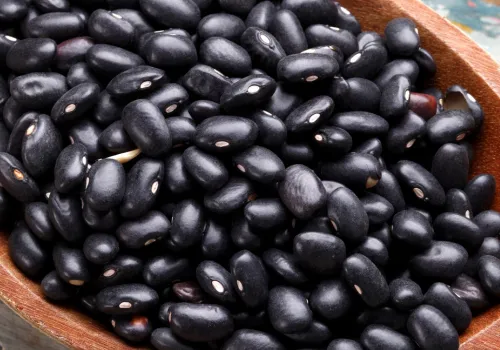
Black beans are versatile legumes that work perfectly in gluten-free cooking. They’re excellent in soups, salads, or as a side dish.
These beans can be mashed for dips or used whole in various recipes.
Black beans are budget-friendly and protein-rich.
Choose low-sodium canned beans or dried ones for cooking from scratch.
Nutrition Info: Per 100g (cooked) – Calories: 132, Protein: 8.9g, Fat: 0.5g, Carbs: 23.7g, Fiber: 8.7g, Iron: 3.6mg
Kidney Beans

Kidney beans add protein and fiber to gluten-free meals.
Their firm texture makes them perfect for chili and salads.
These beans hold their shape well during cooking, making them ideal for meal prep.
Kidney beans can be used in both hot and cold dishes.
Select dried or low-sodium canned kidney beans for the best nutritional value.
Nutrition Info: Per 100g (cooked) – Calories: 127, Protein: 8.7g, Fat: 0.5g, Carbs: 22.8g, Fiber: 6.4g, Iron: 2.9mg
Final Thoughts
Embracing a gluten-free lifestyle doesn’t mean sacrificing flavor or variety in your diet.
These 30 foods demonstrate the incredible diversity available to those eating gluten-free.
By incorporating these nutritious options into your meal planning.
You can create delicious, satisfying dishes that support your dietary needs while maintaining optimal health.
Remember, the key to successful gluten-free eating is focusing on naturally gluten-free whole foods and getting creative with your meal preparations.
Start with these basics and watch your culinary horizons expand.
